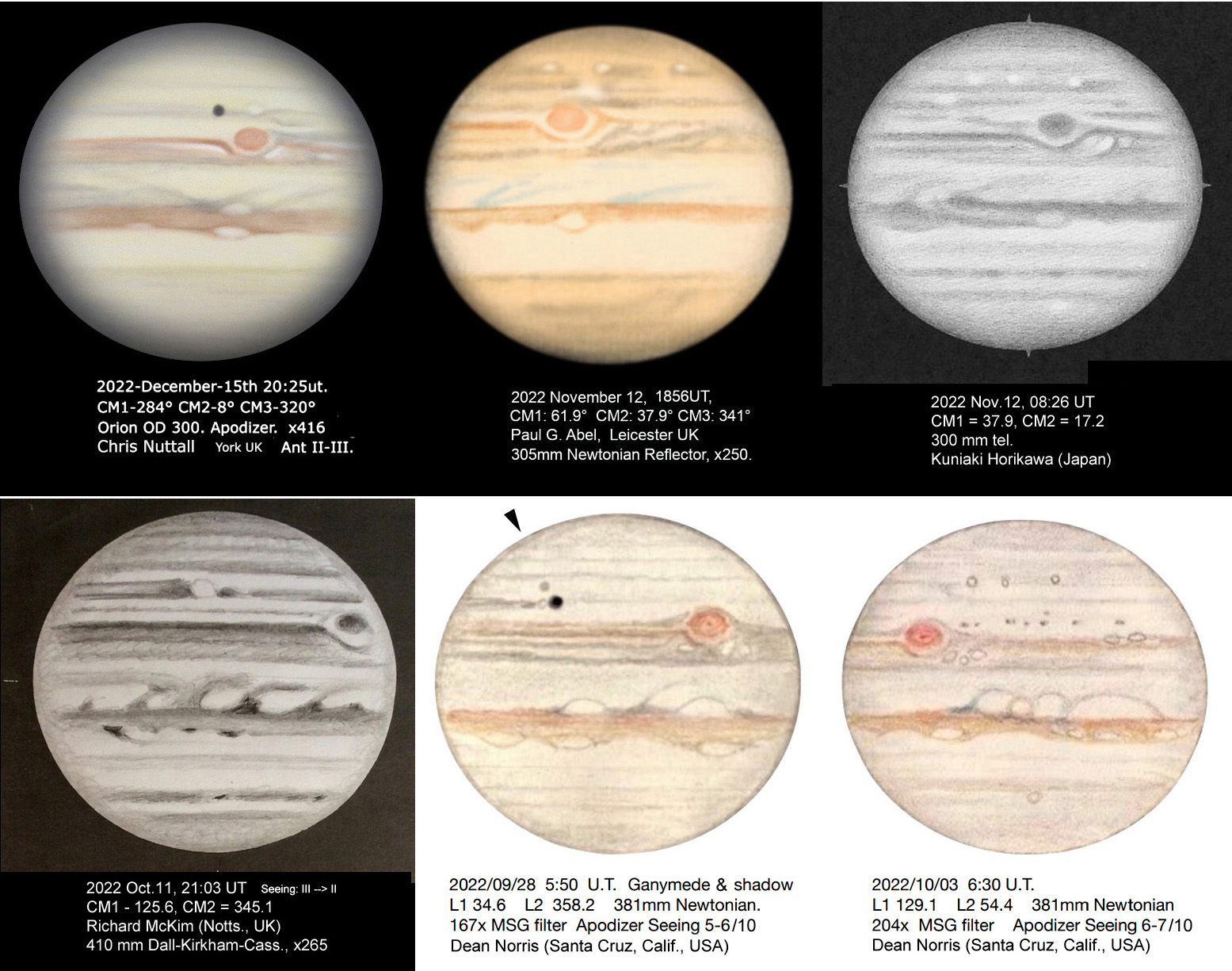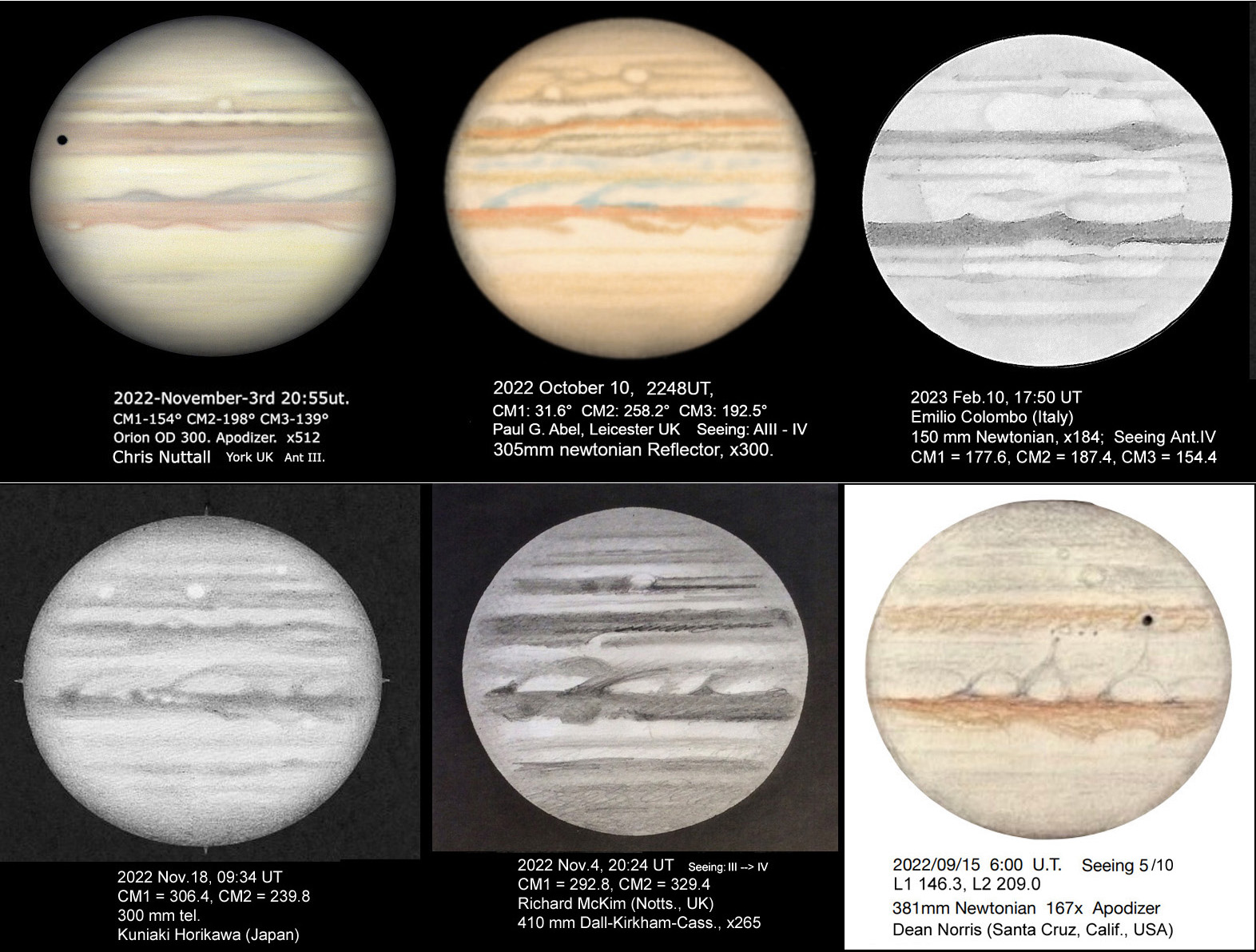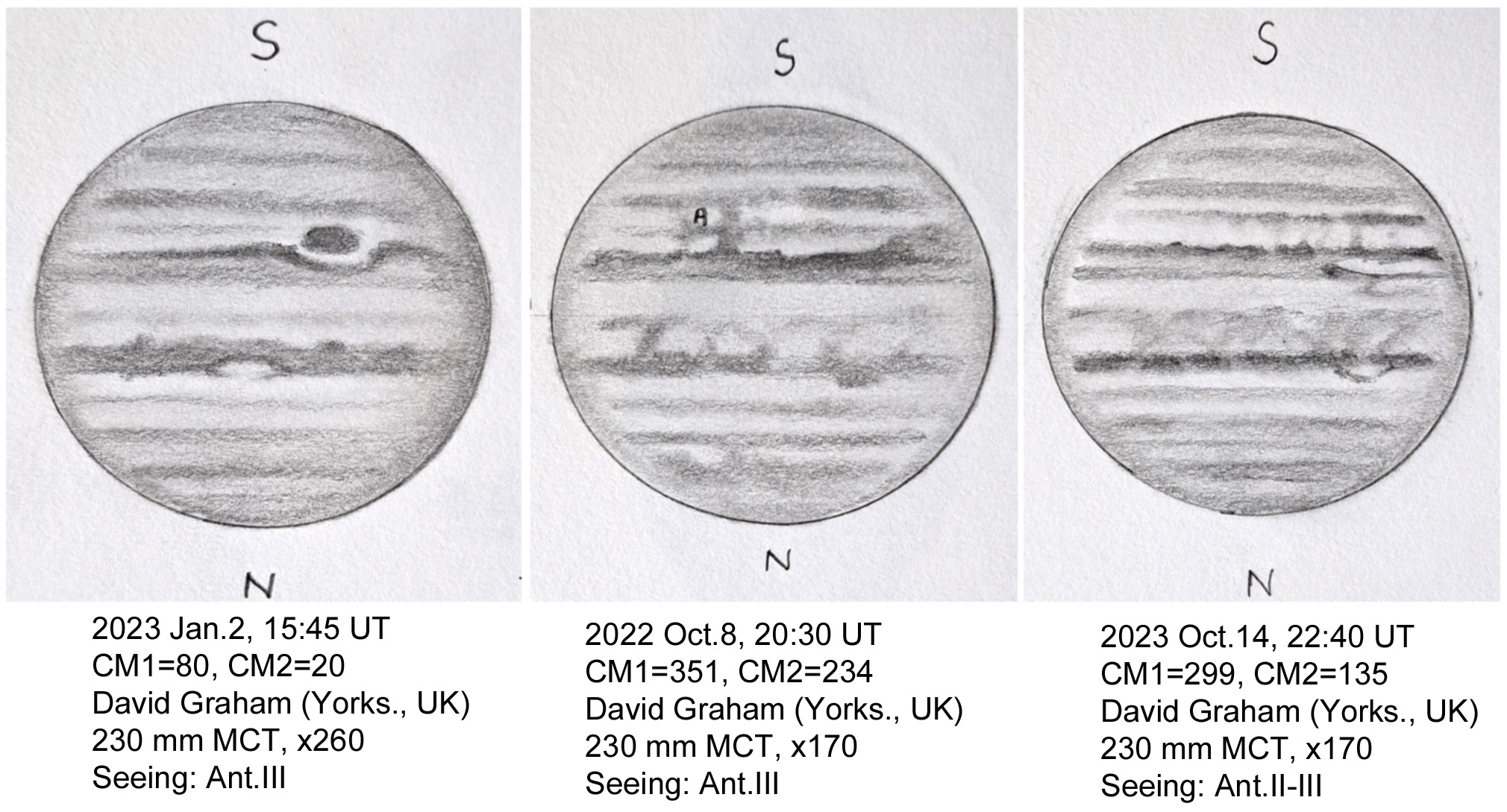Jupiter in 2022-23: Report no.7 (Visual)
Jupiter in 2022/23, Report no.7: Summary of visual observations.
Despite the great advances in planetary imaging, amateur astronomers still enjoy visual observing and the Jupiter Section is still happy to record their observations, which continue a great historic tradition, and often give observers the enthusiasm for subsequent adoption of hi-res imaging. Now that Jupiter is in the northern sky, BAA members in the UK are starting to get good views again. We have just posted a tutorial on visual observing of Jupiter on the BAA ‘Community’ pages; direct link: https://britastro.org/2023/visual-observation-of-jupiter
Here we show examples of drawings and other types of observation contributed to the Section in the 2022/23 apparition. South is up as that is how the planet is seen by these observers, all being in the northern hemisphere.
Figures 1 & 2 show drawings by Chris Nuttall (UK), Richard McKim (UK), Paul Abel (UK), Kuniaki Horikawa (Japan), Dean Norris (California, USA), and Emilio Colombo (Italy). Figure 3 shows some by David Graham (UK). Summaries of some other types of observation are then given below.

Figure 1. Some drawings from 2022/23, all showing the GRS.

Figure 2. Some drawings from 2022/23, showing the side of the planet opposite the GRS.

Figure 3. Some drawings by David Graham, who contributed 14 drawings (with several transit timings). He described the GRS as “salmon-pink”.
Richard McKim sent observations from 6 dates, with drawings and often intensity estimates and other notes. He described the GRS as “dark orange-red”. His descriptive summary is attached here: Jupiter 2022 McKim
Dean Norris (in California) made numerous observations, especially transit timings to measure longitudes, and he plotted these in charts for each latitude band so as to calculate the drift rates of 16 major spots from the SSTB to the NTropZ. Drift rates from visual transits during an apparition are typically too high by ~+1.2 deg/30d due to the changing phase of the planet [Rogers JH (1995), The Giant Planet Jupiter (CUP)]. Taking this into account, Dean’s results agree well with those from the JUPOS team’s measurements of images, which are mentioned in our other 2022/23 reports. He also made some colour drawings. His full report is attached here: 2022 Jupiter Report _Dean Norris_v3-final
Paul Abel made numerous hi-res colour drawings, and his report is attached here: Jupiter 2022-23 PAbel
Alan Heath (Nottingham, UK) has been making systematic intensity estimates of the belts and zones since the late 1950s. In 2022 he made ten sets of estimates, although no longer with the high resolution of his earlier years, as he is now using only a Celestron 8, generally with poor seeing and transparency. This must be one of the longest series of observations that any observer has ever made.
| The British Astronomical Association supports amateur astronomers around the UK and the rest of the world. Find out more about the BAA or join us. |
